













Hyundai Inster Review
The Hyundai Inster is an adorable, cheeky little scamp that’s a top choice if you’re after a small electric car.
It’s flexible, sophisticated, stuffed with equipment and decently rangey, but all that means it’s a bit more expensive than its nearest rivals.
- Superbly thought out
- Small outside, big inside
- Well suited to faster roads, not just cities
- Not a particularly cheap option
- Small boot and odd parcel shelf
- Beige interior option is an acquired taste
Should I buy a Hyundai Inster?
It’s truly the golden age of small electric cars. We thought we had it good with the likes of the Mini Electric and Peugeot e-208, but now you can pick from talented cars such as the Renault 4 and Renault 5, Fiat Grande Panda, Citroen e-C3 and the Hyundai Inster.
The Inster is remarkable. It’s only 3.8 metres long – giving you a metre of clearance in a standard UK parking space – yet comfortably fits in four people and a vast amount of big car tech. There’s even a heat pump fitted as standard (it’s often an expensive optional extra in EVs) to boost cold-weather efficiency and range.
"Hyundai says you can fit a double mattress in the Inster"
Speaking of which, the Inster is properly efficient – our test car’s trip computer stated it had achieved 4.5 miles per kWh over the last 70 or so miles. The maximum range for the Inster stands at 203 miles for the 42kWh Standard Range model, or 223/229 miles for the 49kWh Long Range battery (the difference is due to the wheel size options available).
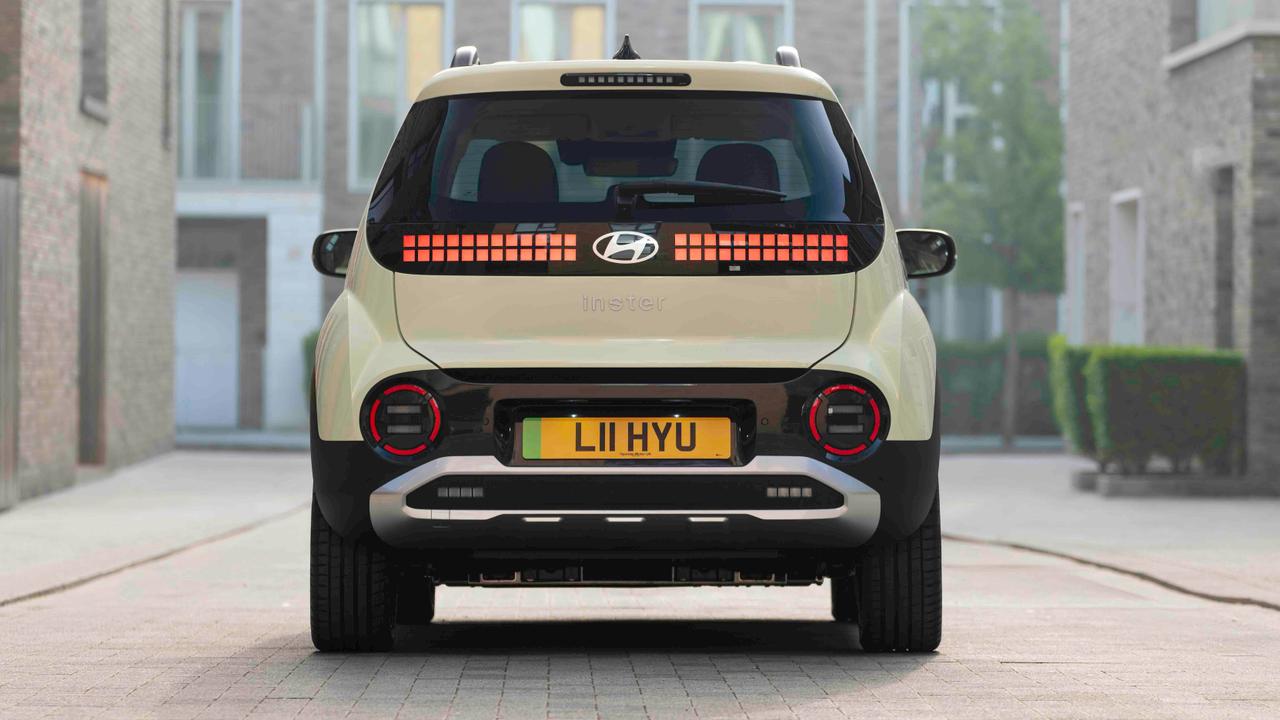
Combined with a grown-up driving experience, it means the Inster isn’t just for the city. Thin windscreen pillars and a high driving position means the dinky Inster feels like a big-ish SUV from behind the wheel – although its size means it’s a doddle to park and manoeuvre.
This feeling of a big car being distilled into a small one extends to the price. While the entry-level model’s starting price of around £23,500 almost exactly matches a mid-spec Renault 5, the Inster 02 is getting on for £27,000. Yes, some rivals are more expensive still, but that’s proper car money – you can get very spacious and practical cars for the same cost. Look out for chunky manufacturer deposit contributions or wait for a used example to make sure you’re not paying too much.
Interior and technology
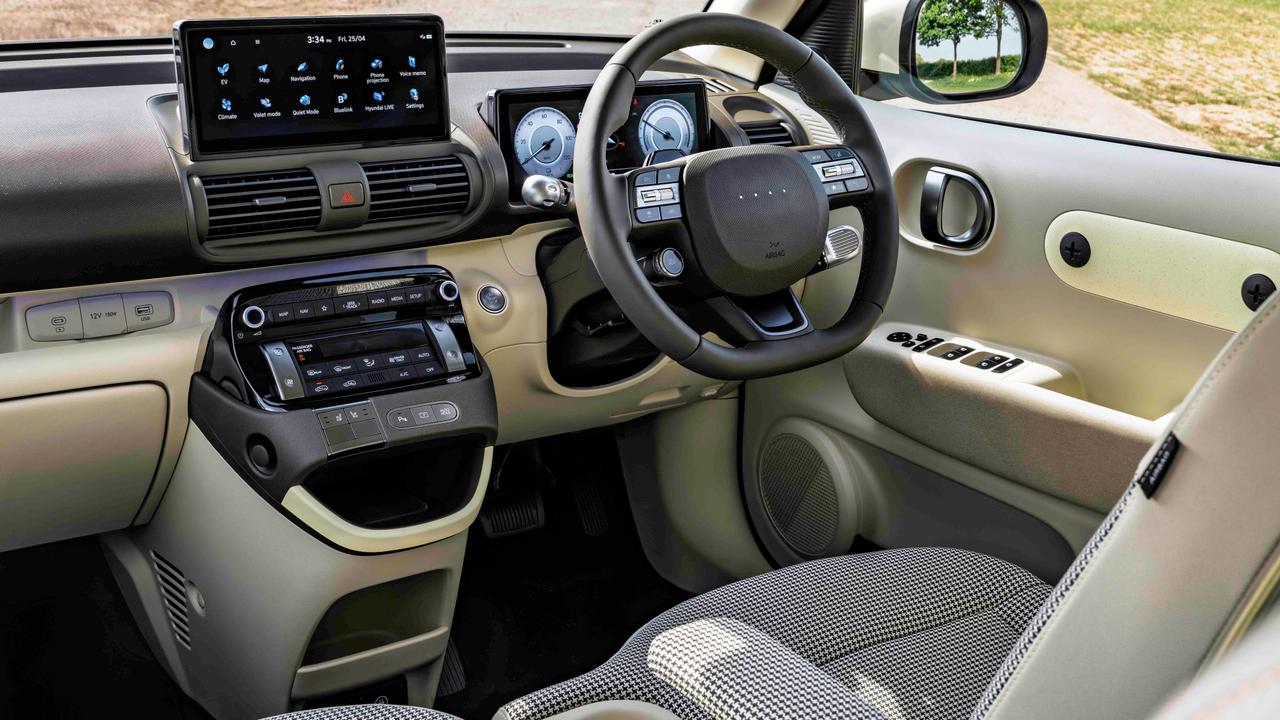
You could accuse the Inster’s interior of feeling busy, because there are buttons and features on almost every surface. We think it’s a case of really efficiently using the space available. A case in point is the gear lever, which you’ll find on the steering column – freeing up space for several storage trays on the centre console and an open space between the console and seats.
That space and the slim dashboard give the Inster an airy feel, and you could forget that you’re in such a small car.
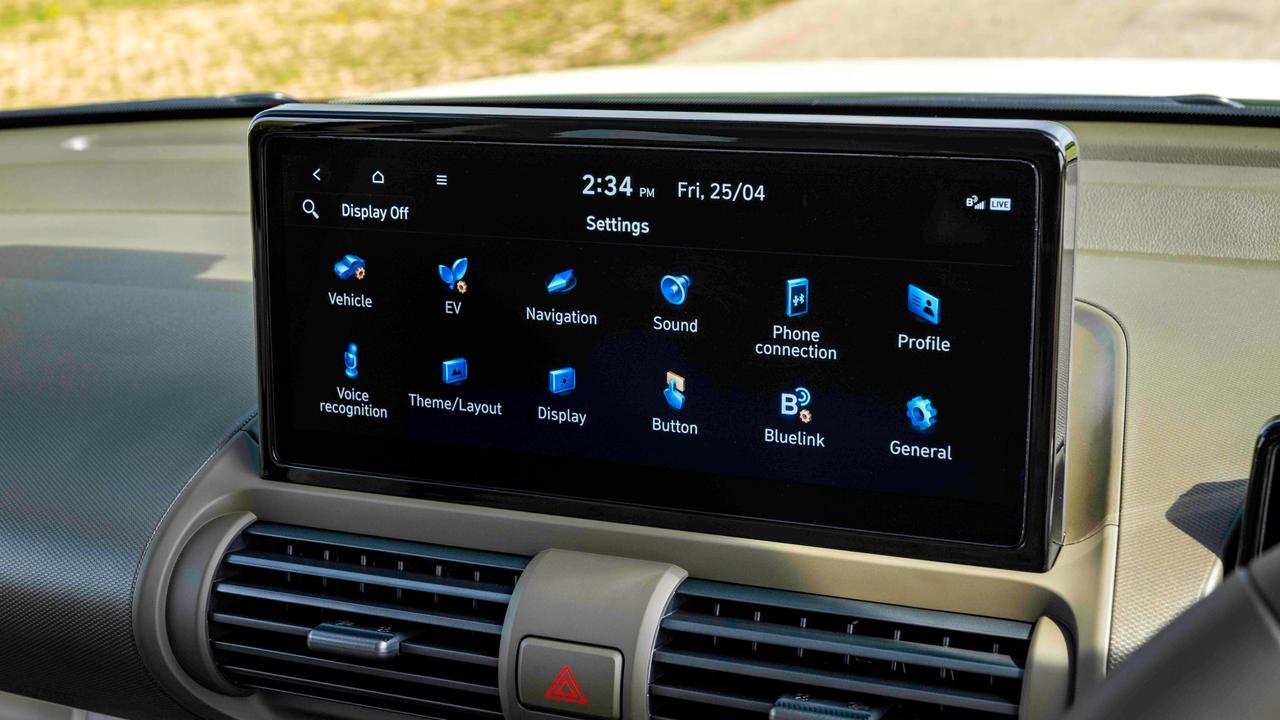
To save even more space, Hyundai could’ve chucked everything onto the touchscreen, but we’re very glad it chose a bank of physical buttons instead. The touchscreen has plenty of useful features, but you don’t need to rely on it and you don’t feel like you’re diving into various submenus every few seconds.
A few quirks aside, the touchscreen is pretty responsive and easy to use. The main functions are readily accessible, although lesser-used features will require a deep dive to remember how to get to them.
Our test car came with an unusual beige and brown interior colour scheme, with a fantastic houndstooth pattern for the upholstery. There are some odd bits to this, such as the door card padding that feels like cheap lino, and the lighter beige trim pieces that look discoloured, but the other option is a drab black on grey scheme. You can only choose the beige interior with three of the seven paint colours, mind.
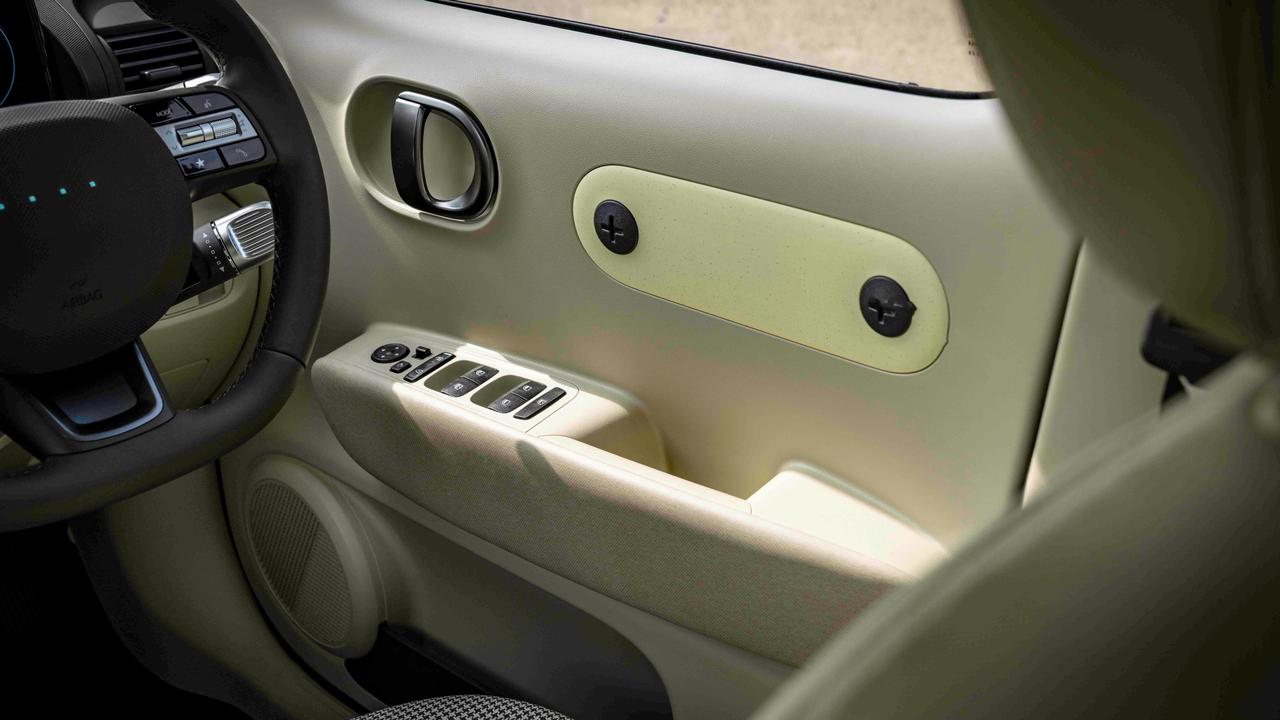
Raid the accessories catalogue and you can make use of those panels on the doors with the enormous crosshead screws. Hyundai will sell you a photo holder, a storage pocket for credit cards or a string pocket like you’d find on the front of a hiker’s rucksack. You can also choose a tray for the front passenger seatback, a fold-down picnic table for the back of the driver’s seat, and even an umbrella stand.
The lineup kicks off with the Inster 01, which has an impressive list of standard equipment. Alloy wheels, climate control, twin 10.25-inch screens, adaptive cruise control, keyless entry and a reversing camera are all included. The 02 model adds roof rails, heated seats, a heated steering wheel, LED headlights, privacy glass and wireless phone charging. Top-spec Cross gets all this plus a 4x4-inspired body kit, blind-spot monitoring and a sunroof.
Practicality
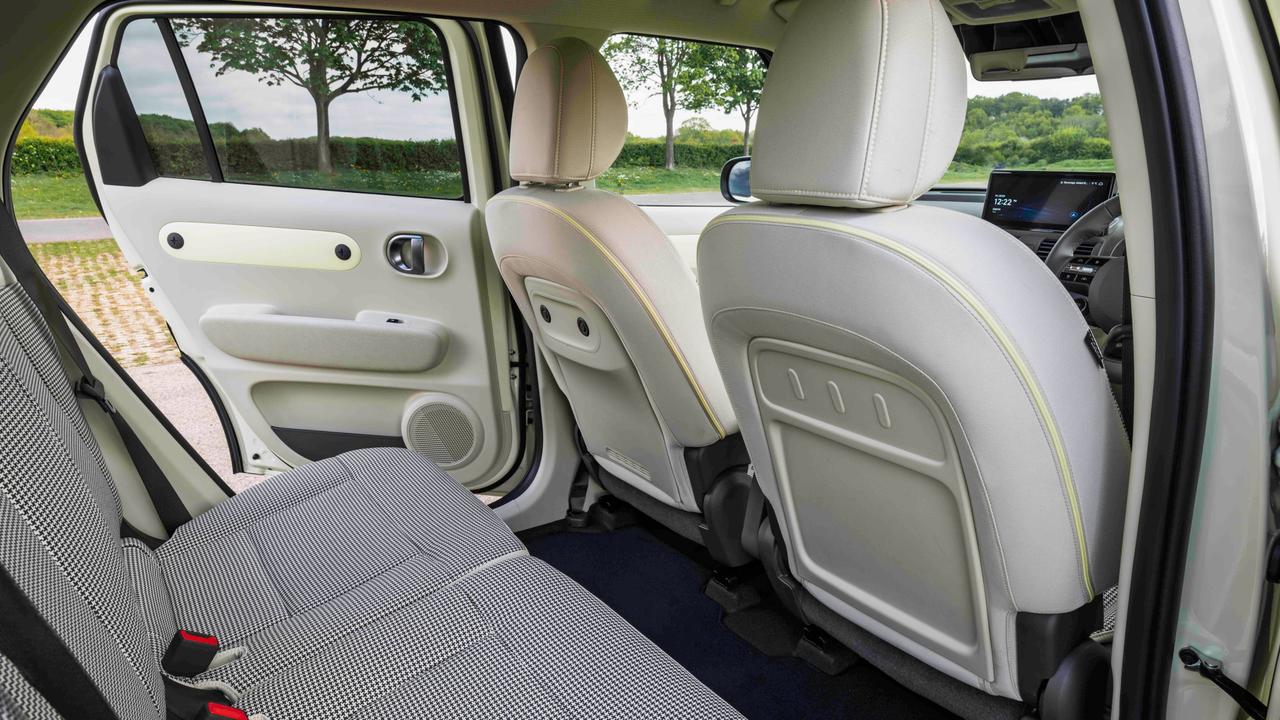
For its size, the Inster is immensely practical. There’s genuine room for four adults, with both legroom and headroom to spare. Footroom is really good, partly due to the flat floor and partly due to the fact the Inster’s a strict four seater.
The rear doors open nice and wide, making access quite easy, although they are narrow – and this will make it tricky to install child seats. The Isofix points are behind slightly awkward zips, too. Rear-seat passengers have a slim doorbin and electric windows, plus a proper three-pin plug socket.
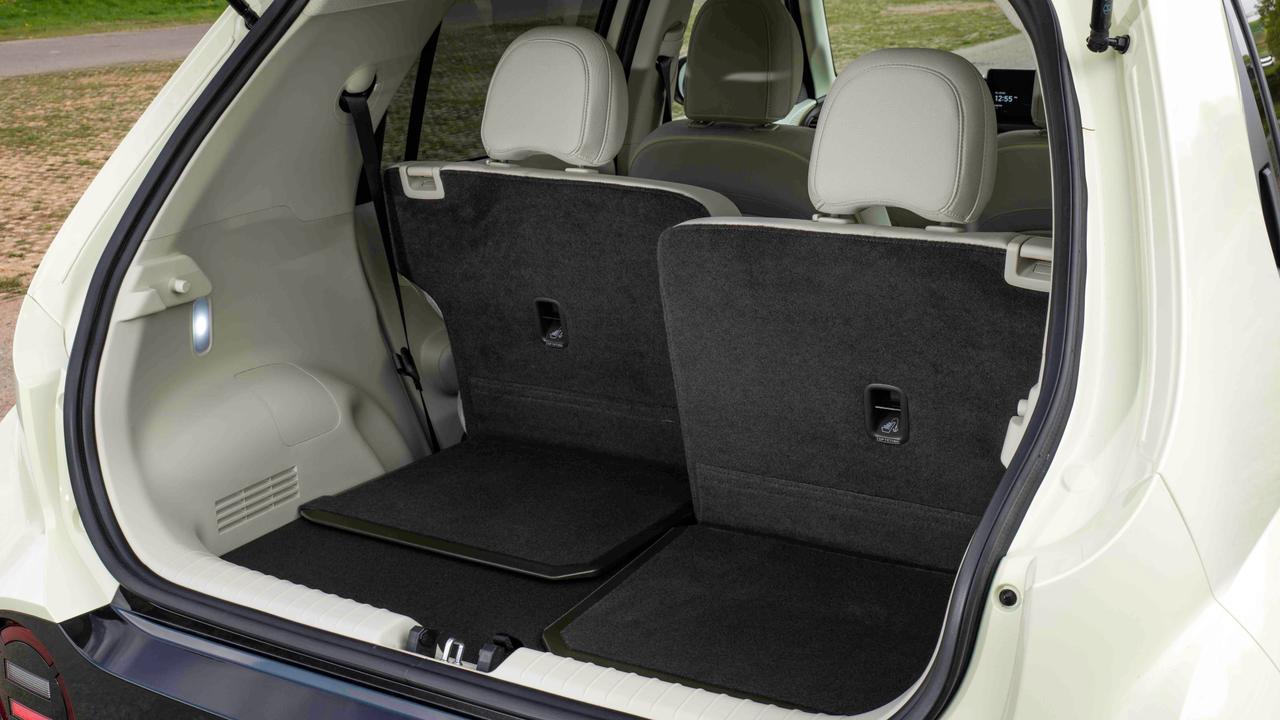
Choose the 02 or Cross models and you get sliding rear seats, which can boost legroom or boot space. That’s not even the Inster’s best party piece. Fold down the seats and the loadbay is completely flat – and the front seats can fold flat too. Hyundai says you can fit a double mattress in the resulting space.
Without sliding seats, the Inster’s boot stands at 280 litres. If you get the sliding seats, the boot ranges from a small 238 litres to a massive 351 litres – although that assumes your rear-seat passengers don’t mind losing their lower legs. The parcel shelf clips to the headrests – a solution that’s so simple that we don’t know why it’s not more widespread – but we found that it gets in the way. Might be best to take it out unless you want to hide what you’re carrying.

Up front, storage is exceptionally well thought out. There’s a useful glovebox, a couple of useful trays beneath the air vents, and a stack of storage zones under the air con controls. Another clever bit of thinking is how the cupholders are integrated into the driver’s seat, freeing up space and creating a sofa-like feel with the seats connected. Let’s not forget that there are a couple of hooks on the front passenger’s side, which’ll be good for small coats or takeaway bags.
Engines and performance
The cheapest Inster uses a 42kWh battery and a 97hp electric motor, for a maximum claimed range of 203 miles and a 0-62mph time of 11.7 seconds. We expect this motor will still feel very nippy around town. As mentioned, the generous inclusion of a heat pump means you should still manage close to the claimed figure in winter, whereas rivals will be less efficient.
Upgrade to the 49kWh battery and you’ll get another 20 miles of range (slightly more if you stick with the 01 and its tiny wheels). As this battery is linked to a more powerful e-motor, you also get quicker acceleration and a higher top speed. We’re talking 93mph versus 87mph, so the Inster is no rocket ship, but it’ll comfortably sit at motorway speeds. Just remember that you’ll need to recharge more often with motorway driving, as in any EV.
The smaller battery can be recharged at up to 73kW, while the larger battery gets an 85kW maximum. As a result, both charge from 10-80% in half an hour. If you’ve got a home charger, the Inster’s modest batteries mean a full 0-100% charge takes around six or seven hours. Grab an EV tariff and you’ll enjoy super-cheap charging windows in the early hours of the morning, having scheduled the charging start time in the app.
Driving and comfort
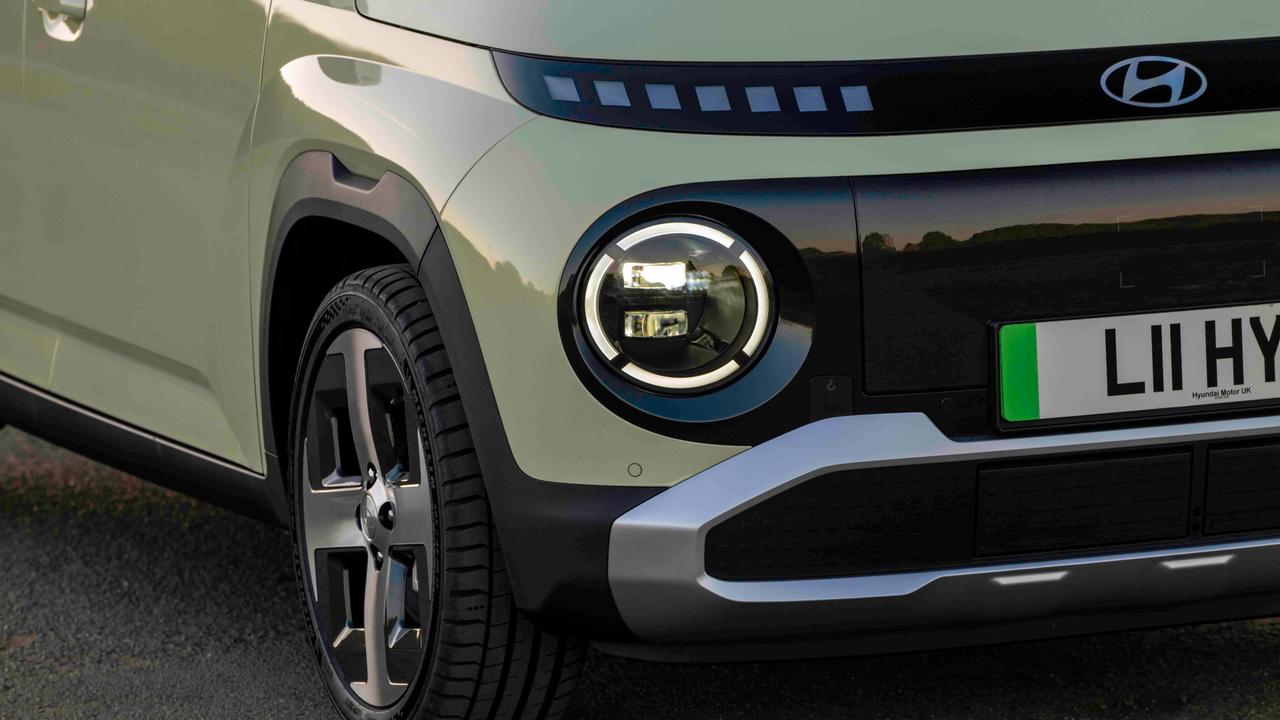
You might be expecting a juvenile driving experience based on the Inster’s cute looks, but actually it feels grown-up and sophisticated – like a mini Ioniq 5. There’s no brittleness and it doesn’t feel tinny like the Dacia Spring does.
The Inster soaks up most low-speed bumps nicely, although harsh potholes are clearly felt in the cabin. Increase the speed and the ride becomes very slightly busy – but it still impresses for a small car.
Refinement is good, too, even if the Renault 5 is even better. There’s a fair bit of wind noise on account on the Inster’s upright stance – watch out for crosswinds – as well as a little bit of tyre, road and motor noise. It’s unlikely to be a dealbreaker, especially if you’re coming from a petrol or diesel car.














































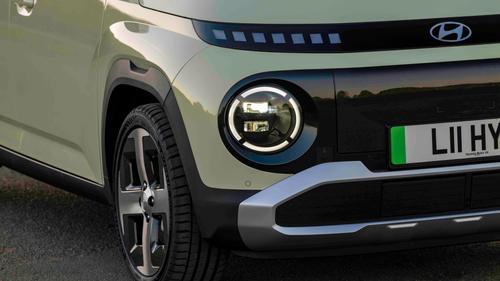

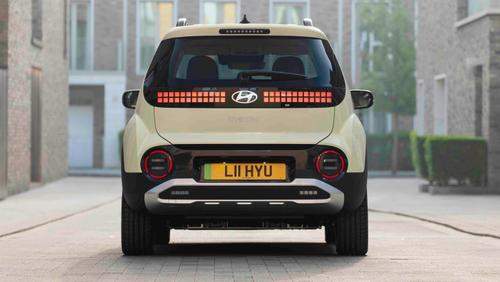
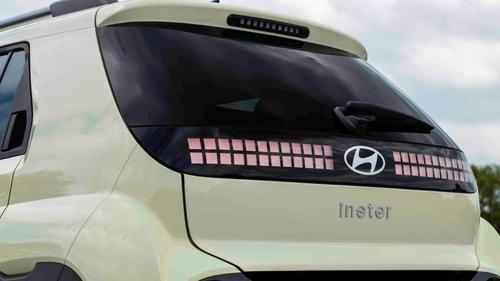
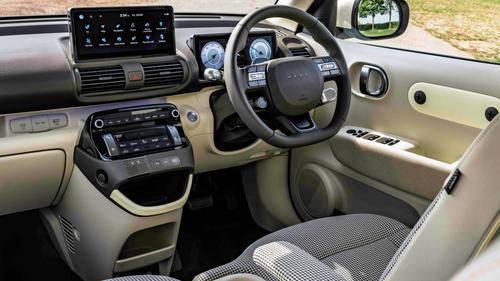
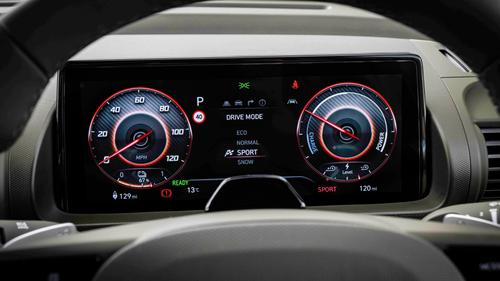
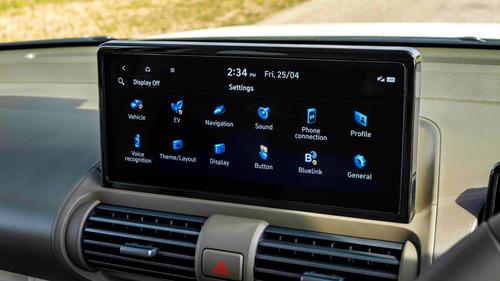
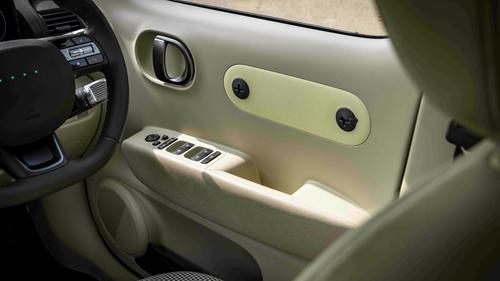
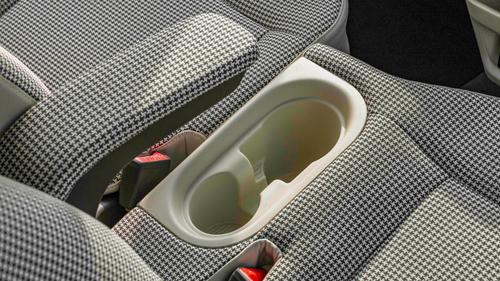
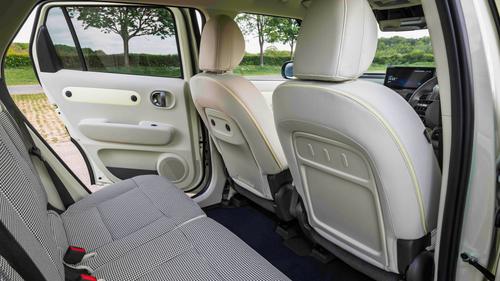

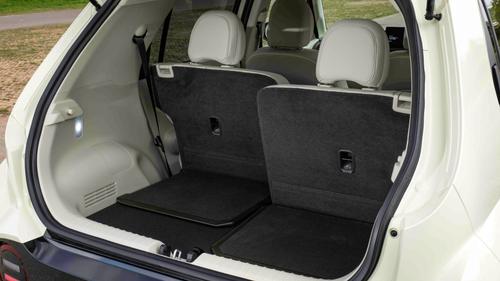





.jpg&w=800&q=75)
